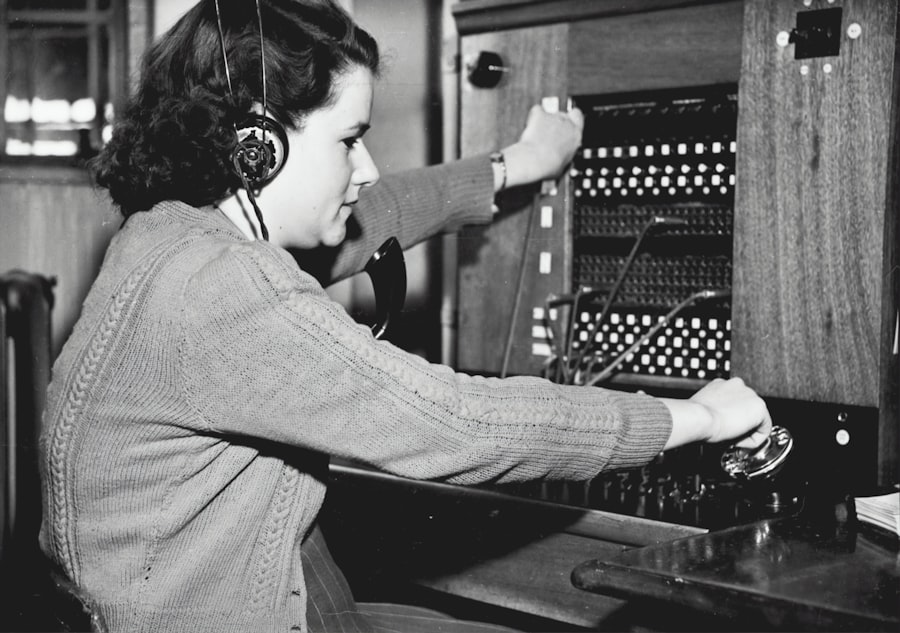Customer satisfaction is a fundamental aspect of business success, serving as a key indicator of a company’s overall performance and long-term viability. It measures how effectively a company’s offerings align with or surpass customer expectations. Satisfied customers are more likely to make repeat purchases, provide positive recommendations, and contribute to a favorable brand image.
In today’s competitive market, where consumers have numerous choices and brand loyalty can be challenging to maintain, understanding the intricacies of customer satisfaction is essential. Companies that focus on this area not only cultivate a dedicated customer base but also gain valuable insights into their operational strengths and areas for improvement. Furthermore, customer satisfaction is directly correlated with financial performance.
Research has consistently demonstrated that companies with high customer satisfaction scores tend to outperform their rivals in terms of revenue growth and profitability. Satisfied customers typically exhibit lower price sensitivity and are often willing to pay more for products or services they trust. This creates a positive feedback loop: as companies invest in improving customer satisfaction, they frequently experience increased sales, which in turn enables further investment in quality enhancements and customer engagement strategies.
Therefore, recognizing the significance of customer satisfaction is not just a theoretical exercise; it is a crucial strategic consideration that can significantly influence a business’s trajectory and success.
Key Takeaways
- Customer satisfaction is crucial for business success
- Effective communication is key to satisfying customers
- Timely and efficient support is essential for customer satisfaction
- Personalizing the customer experience can lead to higher satisfaction
- Utilizing technology can improve customer service and satisfaction
Implementing Effective Communication Strategies
Consistency and Active Listening
Maintaining a unified voice helps create a cohesive brand identity that resonates with customers and reinforces a company’s commitment to service excellence. Active listening is also crucial, as it encourages feedback and responsiveness to customer inquiries, demonstrating that their opinions and experiences are valued.
Leveraging Communication Tools
Utilizing various communication tools can enhance customer engagement. For example, chatbots and automated messaging systems can provide immediate responses to common queries, while personalized email campaigns can keep customers informed about new products or services tailored to their interests.
Striking a Balance
However, it is essential to strike a balance between automation and human interaction. While technology can streamline communication, the human touch remains irreplaceable in building genuine connections. By implementing effective communication strategies that prioritize clarity, responsiveness, and personalization, businesses can significantly enhance customer satisfaction and loyalty.
Providing Timely and Efficient Support

Timeliness and efficiency in customer support are critical factors that can make or break a customer’s experience with a brand. In today’s fast-paced world, consumers expect quick resolutions to their issues, whether they are related to product inquiries, technical difficulties, or service complaints. Businesses that can deliver prompt support not only alleviate customer frustration but also demonstrate their commitment to service excellence.
This requires investing in well-trained support teams equipped with the necessary tools and resources to address customer concerns swiftly. Additionally, establishing clear protocols for handling various types of inquiries can streamline the support process and ensure that customers receive consistent assistance. Moreover, efficiency in support goes hand-in-hand with accessibility.
Customers should have multiple avenues through which they can seek help—be it through phone calls, live chats, email, or social media platforms. By offering diverse support channels, businesses can cater to different preferences and ensure that help is readily available when needed. Furthermore, proactive support measures—such as follow-up communications after resolving an issue—can enhance the overall customer experience by showing that the company genuinely cares about its customers’ well-being.
In essence, providing timely and efficient support is not just about resolving issues; it is about creating a seamless experience that fosters trust and loyalty.
Personalizing the Customer Experience
| Metrics | 2019 | 2020 | 2021 |
|---|---|---|---|
| Customer Satisfaction | 85% | 87% | 89% |
| Customer Retention Rate | 75% | 78% | 80% |
| Personalized Offers Redemption | 20% | 22% | 25% |
Personalization has emerged as a key differentiator in today’s marketplace, where consumers are inundated with choices. Tailoring the customer experience to individual preferences and behaviors can significantly enhance satisfaction levels and foster deeper connections between brands and their customers. This approach goes beyond simply addressing customers by their names; it involves understanding their unique needs, preferences, and purchase histories to create customized interactions.
For instance, businesses can leverage data analytics to segment their customer base and deliver targeted marketing campaigns that resonate with specific demographics or interests. By making customers feel valued and understood, companies can cultivate loyalty that transcends transactional relationships. Furthermore, personalization extends to every touchpoint in the customer journey—from initial engagement through post-purchase follow-up.
For example, personalized recommendations based on previous purchases can enhance the shopping experience by guiding customers toward products they are likely to enjoy. Additionally, personalized communication—such as birthday discounts or tailored content—can create memorable moments that strengthen brand affinity. As consumers increasingly seek authentic connections with brands, investing in personalization strategies becomes essential for businesses aiming to stand out in a crowded market.
Ultimately, personalizing the customer experience not only drives satisfaction but also fosters long-term loyalty.
Utilizing Technology to Improve Service
In an era defined by rapid technological advancements, businesses must harness the power of technology to enhance their service offerings effectively. From artificial intelligence (AI) chatbots that provide instant responses to customer inquiries to sophisticated customer relationship management (CRM) systems that track interactions across multiple channels, technology plays a pivotal role in streamlining operations and improving service quality. By automating routine tasks and providing employees with real-time data insights, companies can free up valuable resources to focus on more complex customer needs.
This not only enhances efficiency but also empowers employees to deliver more personalized and informed service. Moreover, technology enables businesses to gather and analyze vast amounts of data related to customer behavior and preferences. This data-driven approach allows companies to identify trends and patterns that inform strategic decision-making.
For instance, predictive analytics can help businesses anticipate customer needs before they arise, enabling proactive service interventions that enhance satisfaction levels. Additionally, technology facilitates seamless communication between departments, ensuring that all team members are aligned in their efforts to serve customers effectively. By embracing technology as a tool for improvement rather than merely a means of automation, businesses can elevate their service standards and create exceptional experiences for their customers.
Empowering Employees to Deliver Exceptional Service

Creating a Supportive Environment
By creating an environment where employees feel supported and motivated, businesses can cultivate a workforce that is genuinely committed to delivering exceptional service. Furthermore, employee engagement directly correlates with customer satisfaction; happy employees tend to create happy customers. When staff members are enthusiastic about their work and believe in the company’s mission, this positivity often translates into better service experiences for customers.
Encouraging Collaboration and Innovation
Regular feedback mechanisms—such as employee surveys or performance reviews—can help organizations gauge employee sentiment and identify areas for improvement. Additionally, fostering open lines of communication between management and staff encourages collaboration and innovation in service delivery.
Driving Loyalty through Empowerment
Ultimately, empowering employees not only enhances their job satisfaction but also leads to improved customer experiences that drive loyalty.
Gathering and Acting on Customer Feedback
Gathering customer feedback is an invaluable practice for any business seeking to improve its offerings and enhance customer satisfaction continually. Feedback mechanisms—such as surveys, reviews, or direct conversations—provide insights into what customers appreciate about a brand as well as areas where improvements are needed. By actively soliciting feedback, companies demonstrate their commitment to listening to their customers’ voices and valuing their opinions.
This practice not only helps identify pain points but also uncovers opportunities for innovation and growth within the organization. However, collecting feedback is only half the battle; acting on it is where true transformation occurs. Businesses must analyze the feedback received and implement changes based on customer suggestions or concerns.
This could involve refining product features based on user input or adjusting service protocols to better meet customer needs. Communicating back to customers about how their feedback has influenced changes reinforces the idea that their opinions matter and fosters a sense of community between the brand and its clientele. In essence, gathering and acting on customer feedback creates a dynamic loop of continuous improvement that enhances overall satisfaction while solidifying long-term relationships with customers.



